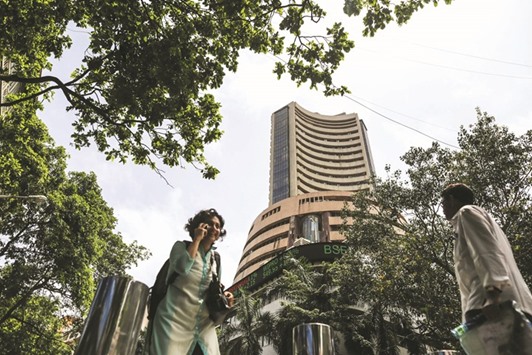India’s benchmark equities index climbed to a 13-month high as automakers and consumer companies rose amid speculation payment of past dues to government staff this week will stoke sales of cars and appliances.
The benchmark BSE Sensex closed up 1.58% at 28,343.01 points after earlier hitting its highest since July 23, 2015. The S&P BSE Sensex capped its biggest advance in seven weeks at the close in Mumbai, the most among Asian benchmark indexes. Gains in emerging-market stocks, following a rally in US equities to near a record on Monday, aided sentiment and put the Sensex on course for its sixth monthly increase.
As many as 10mn government employees and pensioners will be received an additional Rs390bn ($5.8bn) in their August paychecks, according to a Deutsche Bank report. Producers of appliances, two-wheeler makers and lenders would benefit the most from the extra money in the hands of consumers, the bank said. Much of India’s world-beating economic growth has been driven by private consumption, which rose 7.4% in the year ended March, helping to offset the drag from declining exports.
“Government staff represent a strong demographic, so the arrears are expected to give a substantial impetus to spending at the margin,” Sunil Sharma, chief investment officer at Mumbai-based Sanctum Wealth Management, said by phone. “Investors are showing a preference for companies that are delivering on growth, leading to sectoral divergences.”
Auto stocks were the best performers on the Sensex. Maruti Suzuki India rallied to an all-time high. The company sees festive season spurring double-digit growth, CV Raman, executive director, engineering, told reporters yesterday. Two- wheeler maker Bajaj Auto was the top gainer on the Sensex, while Hero MotoCorp rose for a third day.
HDFC Bank and ICICI Bank, the biggest private lenders, rose more than 2% each. Asian Paints paced a rally among consumer companies. Hindustan Unilever, the largest household products maker, climbed the most since July.
Ramky Infrastructure Ltd surged 3.9% after getting a Rs7bn contract from The National Highways Authority of India.
The Sensex has risen about 23% from a low in February as capital flows accelerated amid a wave of global policy easing and the forecast of a good monsoon promised a spurt in rural incomes after a two-year drought. Global funds have pumped in $5.8bn so far this year, surpassing the $3.3bn they invested in 2015 and the highest inflow in Asia after Taiwan and South Korea, data compiled by Bloomberg show.
The rebound has driven Sensex’s valuation to 16.4 times projected 12-month earnings, near the highest level since April 2015. The MSCI Emerging Markets Index is valued at a multiple of 12.5, data compiled by Bloomberg show. “India looks set for a positive confidence shock, which should boost consumption and help buoy domestic aggregate demand robustly,” Deutsche Bank analysts Abhay Laijawala and Abhishek Saraf wrote in the report.
Meanwhile the rupee yesterday strengthened against the US dollar, after local equity markets gained over 440 points.
Traders are cautious ahead of the gross domestic product (GDP) data for the June quarter and fiscal deficit data for July today. According to Bloomberg analyst estimates, GDP may be at 7.5% compared with 7.9% in the March quarter. The rupee closed at 67.03 per dollar—a level last seen on August 18 and up 0.22%, its biggest gain since August 1—from its previous close of 67.18. The currency opened at 67.12 per dollar and touched a high and a low of 67.02 and 67.12, respectively.
A new 10-year benchmark government bond that will go on sale this Friday will likely see a cut-off yield below 7%, said bond traders.
According to data from the Clearing Corporation of India Ltd, the new 10-year government debt security is trading at 6.98% in the when-issued market.
The 10-year bond yield closed at 7.11%, compared with its Monday’s close of 7.123%. Bond yields and prices move in opposite directions.
The rupee is down 1.31% till date this year, while foreign institutional investors have bought $5.78 billion in equity and sold $1.19 billion in debt markets.
Asian currencies were trading mixed. The South Korean won was up 0.46%, Taiwan dollar 0.11%, China renminbi up 0.09%. However, Japanese yen was down 0.35%, Malaysian ringgit 0.17% Singapore dollar 0.05%.
The dollar index, which measures the US currency’s strength against major currencies, was trading at 95.789, up 0.21% from its previous close of 95.58.

Pedestrians walk past the Bombay Stock Exchange building in Mumbai. The benchmark BSE Sensex closed up 1.58% to 28,343.01 points yesterday.
